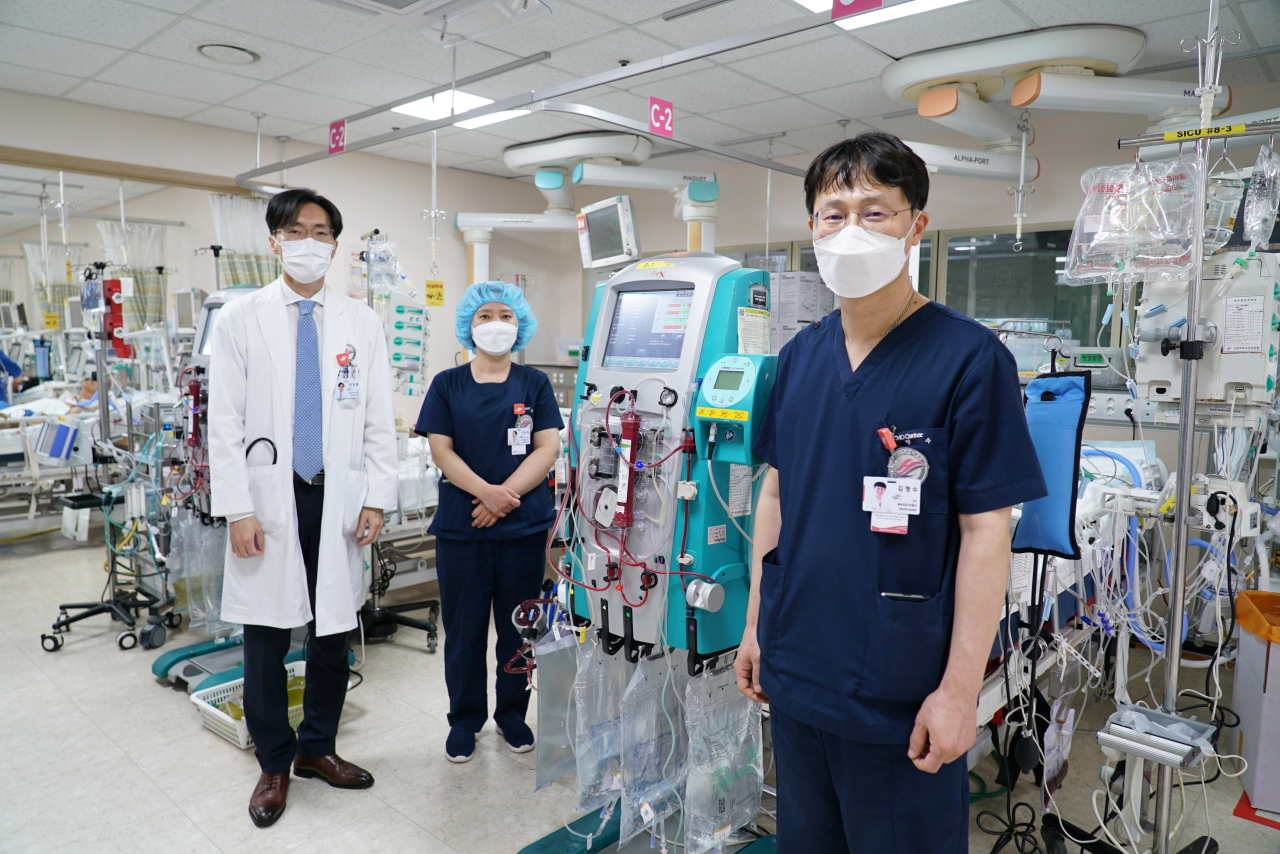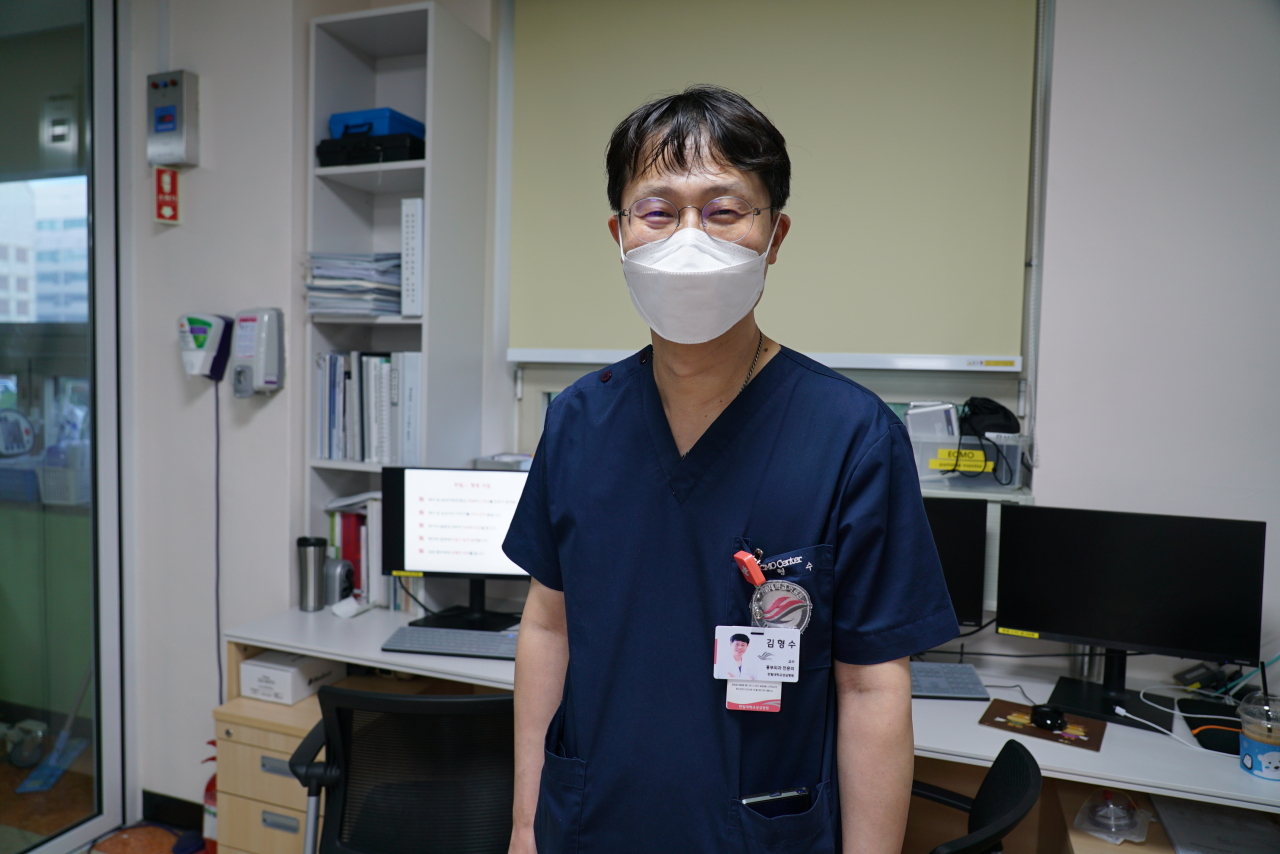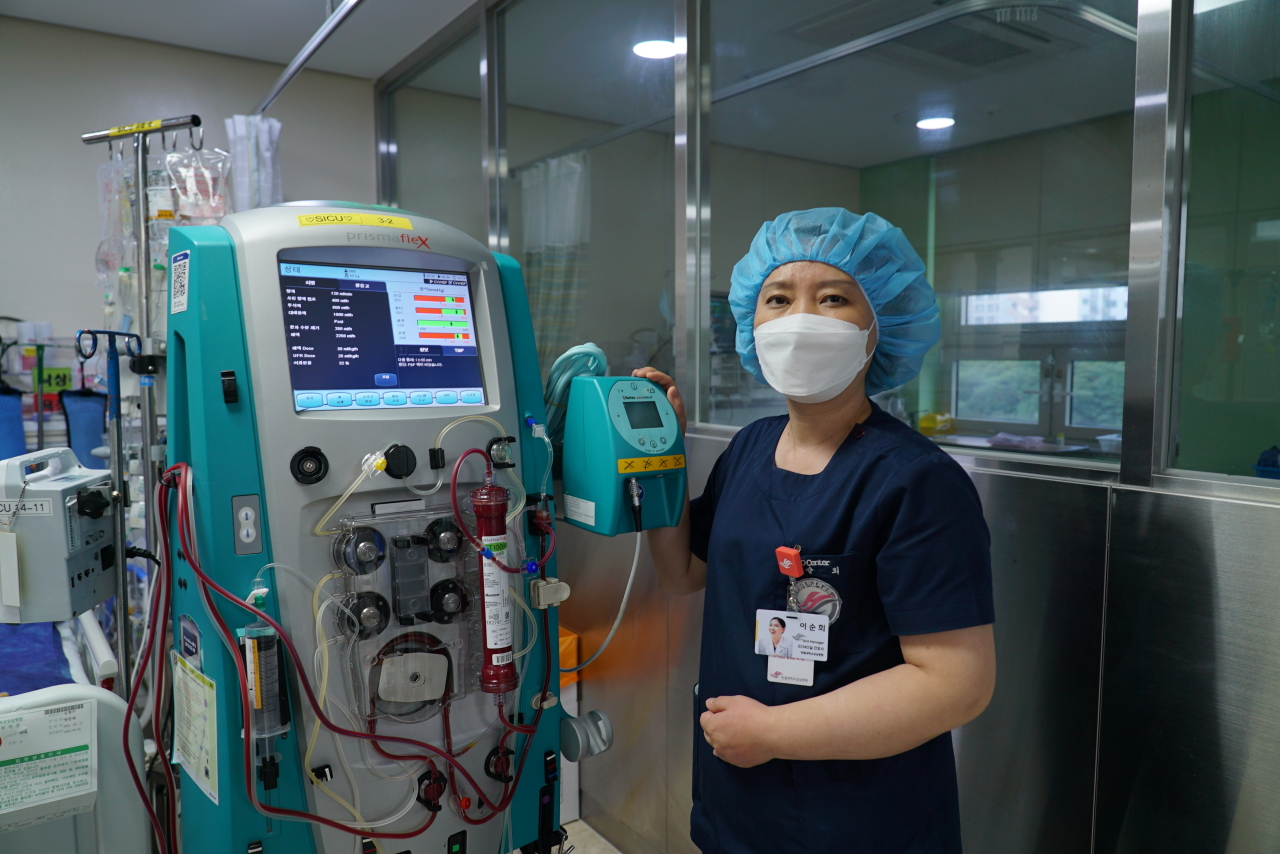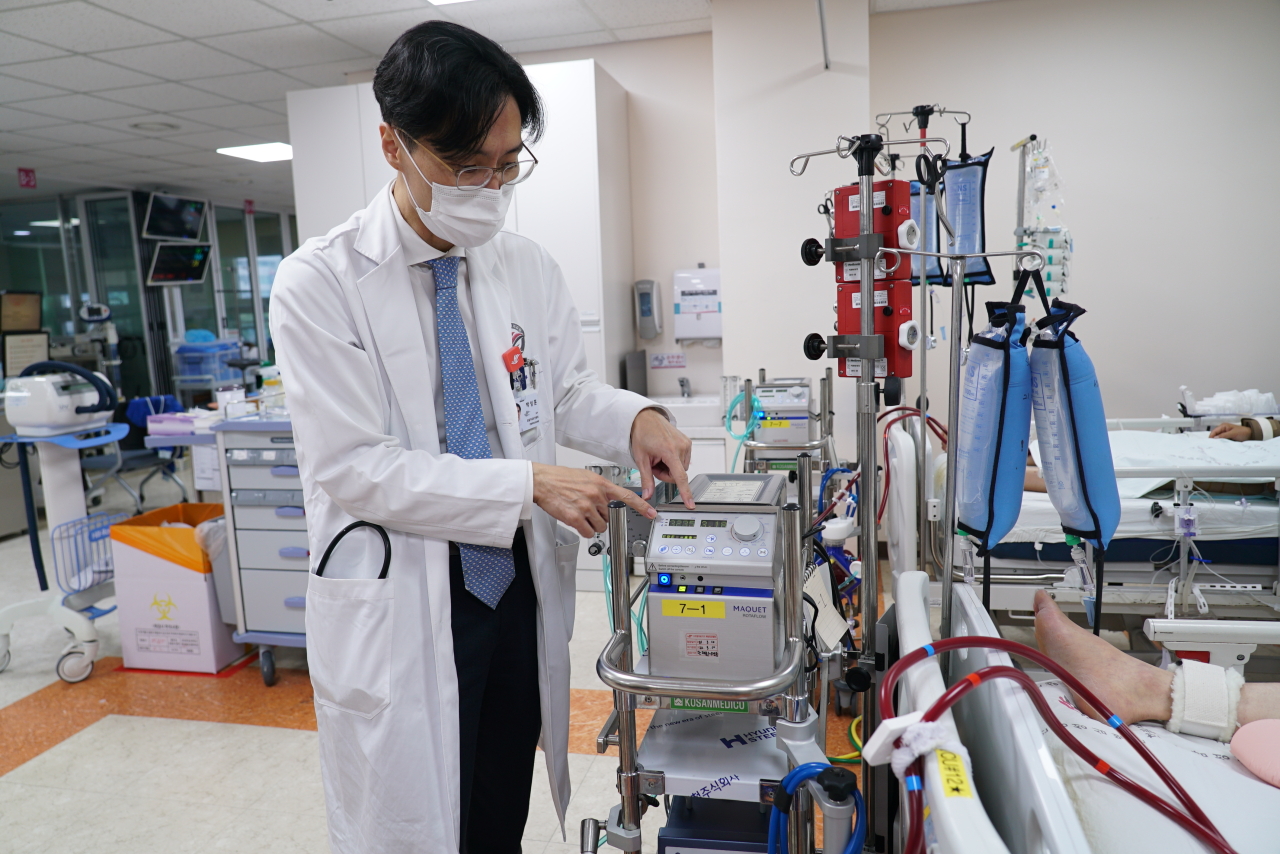 |
In this photo taken Sept. 2, Hallym University Sacred Heart Hospital's ECMO team stands before a former COVID-19 patient undergoing mechanical support and recovering. From left, respiratory disease specialist Dr. Park Sung-hoon; ECMO coordinator and head nurse Lee Sun-hee; chest surgeon Dr. Kim Hyoung-soo. (Kim Arin/The Korea Herald) |
ANYANG, Gyeonggi Province -- At critical case wards across Korea, health care workers have put their lives on the line quite literally every day for the past year and a half as they battle the pandemic.
The squad of doctors and nurses at the Hallym University Sacred Heart Hospital’s center for extracorporeal membrane oxygenation, or ECMO -- the last stage of life support for the sickest patients -- is weathering “the worst of COVID-19” on a daily basis.
The ECMO center’s chief and thoracic surgeon Dr. Kim Hyoung-soo, 53, led a double-lung transplant surgery that ended up saving the life of a 50-something COVID-19 survivor in June last year -- a procedure that is the first of its kind in the country.
Kim, who has led the center since its inception seven years ago, said: “I always say, try not to give COVID-19 any chances.”
When Kim walked into his office to speak with The Korea Herald at around 3:30 p.m. last Thursday, he was soaked in sweat, having just put two newly-transferred patients on ECMO in the isolation unit in the emergency room a floor below.
Neither tested positive for COVID-19 in results that came out later. But until a negative status is confirmed, the same set of precautions for patients with COVID-19 needed to be followed.
The hospital is among the few in all of Korea to be equipped with a dedicated ECMO center and specialized staff -- and thus has naturally become the destination for patients with critical care needs that other hospitals cannot provide.
Kim said he typically changes in and out of a “Level D” hazmat suit four to five times a day, working with patients at the hospital as well as those who have been sent there from areas near and far.
“We have never turned down patient transfer requests, until at one point in August when we ran out of beds,” he said.
Since mid-July, after the fourth wave took off, the hospital’s ECMO center has been operating at near full capacity. Until about two weeks ago, all of its 11 beds were fully occupied, eight of them by COVID-19 patients.
The Korean Society for Thoracic and Cardiovascular Surgery forecasts even higher ECMO demand later this month, which is around the time the government expects to see a slowdown in spread.
“The timeline for a COVID-19 surge in critical care is around 10 to 14 days behind that for overall caseloads,” Kim said, which means that another peak may be yet to come.
 |
Thoracic surgeon Dr. Kim Hyoung-soo stands next to a positive pressure room where a lung transplant patient is isolated. (Kim Arin/The Korea Herald) |
Kim’s office, about 16 square meters large and windowless, functions as sort of a common room for the ECMO staff who have been in “crisis mode” throughout the summer. He and the head nurse-ECMO coordinator Lee Sun-hee, 51, have not gone home to their families in the while, staying instead at the hospital dorm.
Their days are attuned to emerging patient needs. For Kim, late night and early morning hours are the busiest, and 5 to 8 a.m. -- his “usual downtime” -- is when he can sleep with the fewest interruptions.
Asked how long her shift was, Lee replied matter-of-factly: “I don’t have a shift. I’m on call 24 hours a day.” The hospital director recently got her a studio flat in the neighborhood because she had been constantly on the job.
This year’s Chuseok, which is supposed to be a big deal as the first national holiday coming around since the national vaccine program launched, won’t be different from any other days for Lee. With her patients at the hospital was where she planned to be.
“At the end of the day, there is no other place I’d rather be,” she said.
A solemn quiet filled the hospital’s surgical intensive care unit late afternoon that day. The only noise was the restless movements of the medical staff and the soft, rhythmic beeping of the machines keeping patients alive. The air smelled medicinal, and a bit like blood.
This is where patients who are still critically sick after two consecutive negative tests are taken to as their isolation is lifted, to make room for incoming infectious patients. On each of the 21 beds in the unit was a sedated body tied to a jumble of tubes, wires and bags.
Lee said the nurses did everything for the patients, from repositioning them occasionally to prevent bed sores to helping them in and out of “adult briefs.” ECMO and other mechanical support such as continuous renal replacement therapy, called CRRT for short, also required constant monitoring.
While working with her patients, Lee tries to be “emotionally there for them.”
“One moment you are admitted to a quarantine facility as a ‘mild’ COVID-19 case. Then, the next thing you know, you are in an isolation ward battling for your life. Every person you see looks like an alien dressed in full-body suits,” she said.
“It’s a very frightening situation when you think about it.”
 |
ECMO coordinator and head nurse Lee Sun-hee points to a dialysis machine called CRRT. (Kim Arin/The Korea Herald) |
 |
Respiratory disease specialist Dr. Park Sung-hoon is photographed explaining the functions of an ECMO machine. (Kim Arin/The Korea Herald) |






![[Today’s K-pop] Blackpink’s Jennie, Lisa invited to Coachella as solo acts](http://res.heraldm.com/phpwas/restmb_idxmake.php?idx=644&simg=/content/image/2024/11/21/20241121050099_0.jpg)
